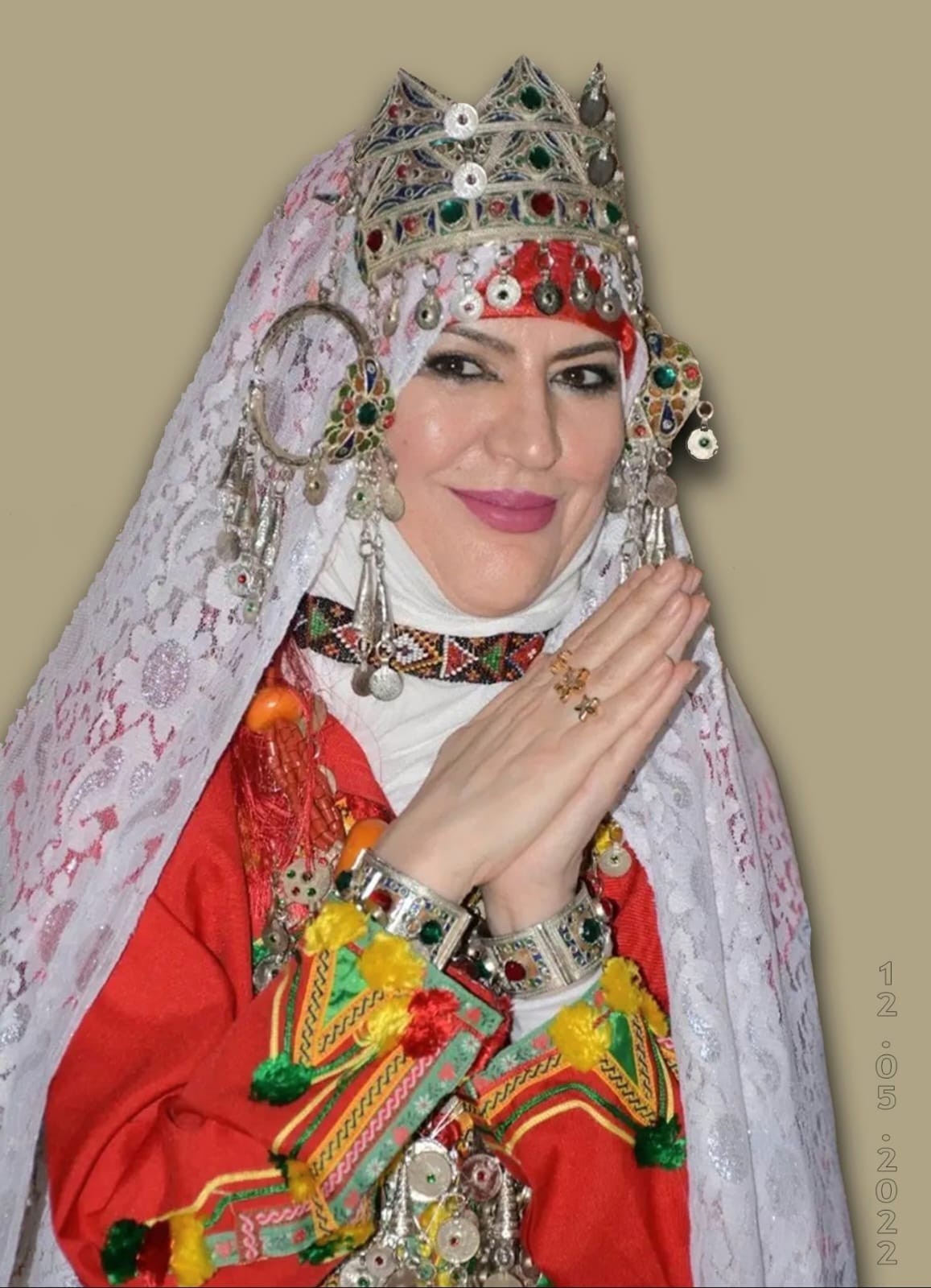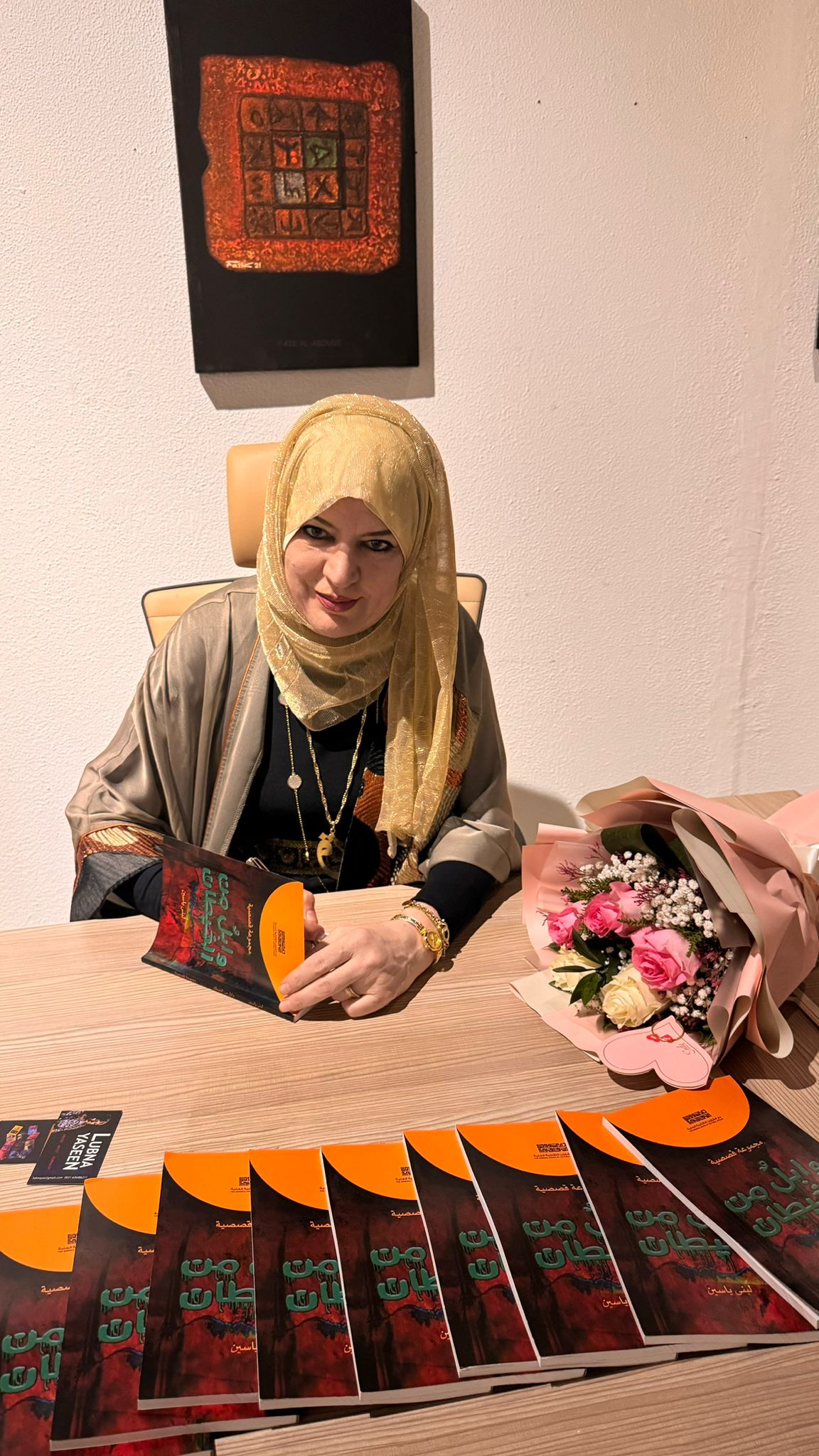An artist of many talents - Interview with Loubna Yassen, Deutch-Syrian artist
 She is a Dutch-Syrian artist who wears many different hats. Recently, she was the co-organiser of an international conference on intellectual property in Baghdad, where she also did a presentation of her latest book. We had a chance to meet with her, and now we will leave the floor to her…
She is a Dutch-Syrian artist who wears many different hats. Recently, she was the co-organiser of an international conference on intellectual property in Baghdad, where she also did a presentation of her latest book. We had a chance to meet with her, and now we will leave the floor to her…
Q: You are a woman of many talents: journalist, artist, and writer. Could you tell us a little about your background?
A: The influence of family on my talents is evident in my case, for I was raised in a household where creativity and intellectual pursuits were valued. My father’s role as a prominent writer and journalist, as well as a notable political figure, and my mother’s passion for drawing, laid the foundation for my own journey. From an early age, I found myself attracted to both writing and drawing. The role models at home encouraged the development of these talents, and my childhood writings even found outlets in children’s magazines and school publications. This early success fueled my passion for storytelling and artistic expression.
Despite my natural attraction to the arts, I chose to pursue academic studies in natural sciences, specialising in biochemistry at Damascus University. To further hone my artistic skills, I enrolled in the Adham Ismail Institute of fine arts in Syria. This educational experience allowed me to delve deeper into the world of visual expression, providing me with a solid foundation in artistic techniques. Subsequently, I decided to explore journalism, inspired by my father’s career, and took courses at the Horizon Institute in Riyadh. This phase of my education equipped me with the necessary skills to navigate the dynamic world of journalism.
The diverse educational background, spanning both the sciences and the arts, reflects my holistic approach to learning and my desire to integrate various facets of knowledge into a cohesive understanding of the world. The unique blend of influences from my family, academic pursuits, and artistic endeavours has shaped my abilities and created a broad perspective.
Q: Given your different activities, do you have one that is particularly close to your heart?
A: While I have had the privilege of showcasing my artistic and literary expressions throughout my career, I do find myself more drawn to writing than to painting. I find myself able to thoroughly bring social or political issues to light with my writing. More specifically; I have had four personal exhibitions and published thirteen books. I find, when delving into the specifics of my literary contributions, seven of these books stand out as collections of short stories. These compilations represent a significant portion of my creative output, emphasising my love and passion for short-storytelling.
One notable recognition that holds a special place in my heart is winning the first prize for migrant literature in the Netherlands with one of my short stories. This accolade serves as a poignant affirmation that short stories are not only a substantial part of my body of work but also hold a particular significance for me. The acknowledgment from the literary community in the Netherlands underscores the emotional depth and cultural resonance embedded in my short stories.
 Q: You have organized painting exhibits for refugee children. Could you tell us about this project?
Q: You have organized painting exhibits for refugee children. Could you tell us about this project?
A: Certainly. Organizing art workshops for refugee children was a project that aimed to address the psychological challenges faced by these children in the wake of wars and forced migration. The initiative was carried out in collaboration with a dedicated group, all sharing a common goal of providing a therapeutic outlet for these children to heal through artistic expression and envision a brighter future.
The primary objective of the project was to encourage the participating children to channel their emotions, hopes, and dreams onto canvases. This psychologically gives them room to express and recover and provides a good outlet for expression. The act of visualising their aspirations and future through art served as a form of psychological recovery, fostering their sense of empowerment and resilience.
The project then took form in two exhibitions hosted in different galleries within the city, showcasing the artwork created by these children. In addition to the exhibitions, the project extended its reach by involving the children in an annual caravan colouring contest in Groningen. This not only added a festive and celebratory element to the initiative but also allowed the children to connect with a broader audience, raising awareness within this audience and further integrating them into their new community.
Q: What about your own art? Could you tell us a little more about it?
A: My personal art particularly focuses on portraying faces using vibrant colours. The visual aspect of art has always been a compelling medium for me. Beyond local showcases, my art has reached an international audience through participation in the China Biennale and the National Museum in China, Beijing, as well as the South Korea Biennale. These opportunities have not only allowed me to share my artistic vision on a global scale but have also exposed me to diverse perspectives and artistic influences.
Drawing, for me, serves as a deeply personal outlet, distinct from what writing provides. The act of creating visual arts allows me another significant form of self-expression. Art is where colours, shapes, and forms come together to convey a spectrum of emotions and ideas. In my work, I often explore the theme of faces, which take on various manifestations – at times resembling masks, at other times capturing raw expressions.
An interesting facet of my artistic journey is the demand for my drawings from fellow writers who have sought my artwork for their book covers. This interplay between visual and literary arts underscores the interconnectedness of forms of creative expression, where my drawings complement and enhance the storytelling elements of written works.
Q: You also write. What exactly do you do in this field?
A: My writing is deeply rooted in a commitment to shedding light on the experiences of marginalised and oppressed individuals. This passion stems from a personal journey with injustice that began in my early years when I witnessed a child being heavily bullied. The profound sense of helplessness that accompanied that moment left an indelible mark on me, serving as a catalyst for my dedication to focusing on the voices of those who often get ignored. Predominantly, I focus on the stories of the poor, the oppressed, and the marginalised. I strive to bring attention to their struggles, emphasising the challenges they face in securing the basic human right to live a dignified life. Through my words, I seek to create a platform for their narratives, allowing their stories to resonate and, hopefully, inspire positive change.
This commitment to social justice and advocacy is a thread that runs through my literary works, discussing narratives that challenge social norms and call for an equitable and compassionate world.
Q: Do you have upcoming events?
A: I have a personal exhibition planned in Switzerland soon, offering an international platform for my art. Additionally, I’m in the early stages of writing a new collection of short stories, continuing my exploration of diverse narratives.
Q: Finally, if you have a message to our readers, what would that be?
A: To your readers, I would like to convey a simple yet important message. In my perspective, our life’s mission is to leave a positive impact. If, in any small way, we can lift someone up or improve the lives of any living being, we are actively combating the ugliness in the world. Each act of kindness, no matter how modest, contributes to a collective effort in making the world a better place. Let’s strive to leave a positive mark and inspire change wherever we go.


